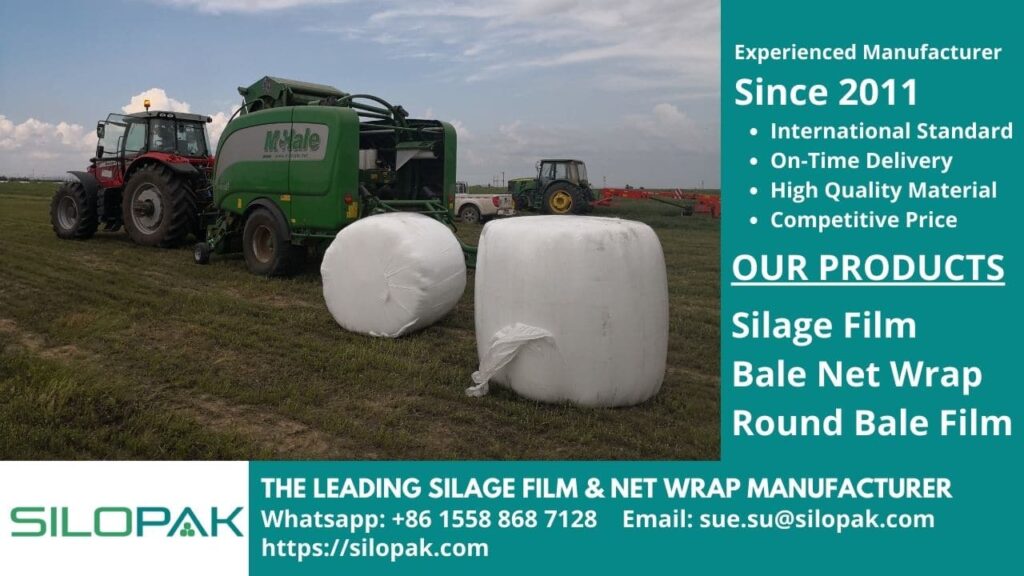
Grass silage is classified as low-cost dairy animal feed and is usually distributed during the winter. Cows need optimal nutritional intake to increase milk yield, while the capacity of the rumen is very limited. Therefore, the production of high-quality grass-type silage is needed.
contents
Grass Silage Quality Parameter
Parameters commonly used by farmers to measure the quality of grass-type silage include:
1. Nutritional Value and Energy
- Crude protein : <17%.
- Crude fiber : 22-25%.
- Dry matter (DM) : 30-45%.
- Raw ash : <10%.
- Net energy for lactation : 6.0-6.4 MJ/kg DM.
2. Fermentation Quality
- Butyric acid : 0.0 % in DM (optimal value).
- pH value : 4.0-5.0 (depending on the value DM content).
3. Maximum Value (0.3% in DM)
- Ammonium N: < 8.0%.
- Acetic acid: 1.5-3.0% in DM.
4. Microbiological Quality
- Mold : <5,000 cfu/g silage.
- Yeast : < 1,000,000 cfu/g silage.

Tips To Produce High-Quality Grass Silage
Producing grass-type silage with high quality is not easy. When compared to corn, grass contains a relatively low sugar value and high protein content which causes a higher buffer capacity, thus lowering the fermentation ability. In addition, 5-7 cm grass clippings versus 20–30 cm corn can increase the risk of contamination with soils such as Clostridia.
Here are some tips for producing high-quality grass-type silage.
1. Harvest at the Right Time
Do it when the optimal DM content is 30 – 45 percent. At this stage of maturity, the plant has the most balanced sugar content, buffer capacity, and raw fiber content.
Harvesting below the optimal DM level has a high risk of Clostridia contamination and higher waste losses. Meanwhile, harvesting above the optimal DM level will complicate compaction because the fiber content is very high.
The optimal particle size for grass silage is less than 4cm. To ensure good compaction, the rule applies; the higher the DM, the shorter the particle size.
2. Compaction
Compaction is one of the most important processes in silage production. The ideal yield is > 650 kg/m3. The whole process must be adapted to the capacity of the compaction machine.
Please note, compact size should not exceed one ton DM/hour/ton machine weight. For example, if the machine weighs 10 tons and the DM content is 40%, the silo should not be filled with more than 25 tons/hour of material. To increase the weight of the machine, it is recommended that you put water on the wheels or use cement blocks mounted on the tractor to increase the machine’s weight. Remember, any extra kg of weight can improve silage quality.
3. Low Soil Contamination Level
The ideal ash content is below 10%. The risk of contamination is usually higher if the silage is relatively wet (<25% DM). If this is the case, it is recommended that you cut with a higher size (7-8 cm).
4. Inoculation
To obtain the desired results, silage with DM content outside the adequate range (25-45%) should be treated with chemical products. For example, wet or dirty grass should be treated with sodium nitrite to control Clostridia, while dry silage should be treated with propionic acid to inhibit fungal growth due to less efficient compaction. In general, the main problem in grass silage is acidification so homolactic acid bacteria (LAB) must be used. Therefore, inoculation is considered a safer and less expensive alternative to acid/salt treatment.
Silage Film Manufacturer in China
Choosing a silage film can be confusing if you are a novice farmer. But don’t worry! You can just order it from a trusted manufacturer. There are several world-renowned manufacturers that you can choose from, for example, Silopak. This manufacturer has been known globally as a trusted specialist brand of silage film and bale net wrap since 2011. To maintain the quality of all its products, this manufacturer only uses high-quality materials with international standards and consists of many variations and sizes that you can choose according to your needs.
Remember, grass silage represents economic alternatives for feeding animals in periods of feed deficit. But, producing it is not an easy thing to do. The quality of the results and the success of the production process must be supported by adequate agricultural equipment. So, be careful in choosing the right production equipment and quality. You should only use equipment that comes from a trusted manufacturer.
